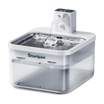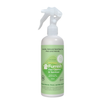Deciding whether your fur babies need emergency care or not can be a stressful decision to make! It can difficult to determine whether your pet’s health problem is serious and even life-threatening or just a mild one. It makes it even harder knowing our pets are often unable to tell us when they’re in serious pain, or when something’s just not feeling right. Most pets even hide it from their owners. But remember, you know your pet better than anyone else and you should know if there are sudden changes from their normal behavior everyday! This is why it’s important to be very familiar with your pet’s normal daily routines and behaviors to tell when something is out of the ordinary.
The first thing you need to know is what situations or conditions of your pet are considered serious enough to consider as an emergency. When your pet becomes sick in the middle of the night, it can be difficult to decide whether you should wait until the vet opens or seek care right away and it’s even harder when you’re traveling. The best way to know this is to call your vet right away! Don’t be shy to call whether it looks mild or not, you are always right to call. It’s always better to take immediate action than regretting it later! To prepare for emergencies, here’s a list of signs that can help you indicate whether your fur babies’ condition requires serious medical attention:
1. Trauma

These cases include hit by vehicles, fight wounds, falling from heights, and gunshot wounds. As soon as this happens, your pet has to be assessed as soon as possible even if they appear fine for it can be difficult to know if the trauma is severe internally such as a ruptured lung or internal bleeding can take some time to show signs and infections can develop if treatment is delayed. These will be very painful for your pet so they will often require your vet to give a painkilling injection. They may need x-rays, blood tests, and other expert services. Completing these treatments as early as possible means faster treatment for your pet and a greater chance of recovery!
If your pet's injury can be as simple as a joint pain, here's 7 Tips on How to Help your Pet with Joint Pain that might help you for a first aid treatment!
2. Unwilling or Unable to Eat or Drink

This one can be very tricky for this can just change in your pet’s behavior because of a given situation such as bringing home a new pet and your pet may stop eating for a day or until they adjust. But of course, if not eating is accompanied by other signs on this list over, you should see a veterinarian. Suddenly not eating for 12-24 hours means something is wrong whether physically or mentally. Do observe this carefully for this could be a sign of digestive issues or an obstruction and the same goes for eating food more than normal. It might always not be an emergency, but you should at least call your trusted vet to make sure there’s no underlying issue.
You can also check out these 7 Effective Guides to Get Your Pet to Drink More Water & 7 ways to get your cat to drink more water to learn more!
3. Collapse or Inability to Wake Up

If your pet suddenly collapses or has gone to sleep and you can’t get to wake it up, then they surely need to see an emergency vet immediately! Collapse describes a loss of strength causing your pet to fall and be unable to rise. Possible causes of collapse include heart disease, vascular (vein and artery) disease, hemorrhage (internal or external bleeding), anemia, respiratory (lung) disease, neurological (brain or nerve) disease, musculoskeletal (muscle, ligament, tendon, bone) disease, toxicity, and some drugs and medications. If your pet suffers any form of collapse, don’t hesitate to seek help from your trusted vet as there could be a life-threatening cause, maybe a case of coma or worst-case scenario, death.
4. Weakness/Lethargy

If your pet becomes sluggish or tired more than usual, it could be a sign that something is wrong. But if course, the cause could be just because your pet had been playing or running for quite a while, but if it lasts for more than 12-24 hours, you should at least call your trusted vet for it may be because of a serious condition take your dog to the vet.
If your pet is having trouble walking or has a loss of balance, this may be signs of shock which include weakness, pale or blue gum color, cold feet, and abnormal heart rate.
You should also consider the warm climate of Singapore. Warmer temperatures increase the risk of your pet becoming overheated while outdoors. Symptoms of heatstroke are excessive panting, reddened gums, excessive drooling, vomiting/diarrhea, weakness, and lethargy. If not treated immediately, heatstroke can be life-threatening.
Here's 9 Hot Weather Tips for Pets to help your pet cope up with Singapore's hot weather!
5. Seizure or Epilepsy

The most common cause of seizures in dogs and cats is epilepsy. If your pet is diagnosed as epileptic not every seizure will constitute an emergency. If your pet has multiple seizures within 24 hours or if a seizure lasts longer than a couple of minutes then your pet may need to be seen by a vet. If this is your pet’s first seizure we recommend you phone your vet for advice and to book an appointment for a check-up. Seizure signs include uncontrollable shaking and tremors, loss of consciousness, paddling with the legs, and possible loss of bowel or urinary control. While a single seizure may not be life-threatening, multiple or cluster seizures can result in hyperthermia. While idiopathic epilepsy is a common cause of seizures in younger dogs, brain tumors, trauma, and toxins should also be ruled out. Epilepsy is extremely uncommon in cats though. But of course, if any cat that is having a seizure should be evaluated by a veterinarian as soon as possible!
6. Difficulty in Breathing

Every pet could pant on a hot day or after exercising and running too much. But if the breathing didn’t return to normal after resting, you should at least call your vet or even bring your pet there right away if the breathing pattern gets worse! Changes in breathing include a faster breathing pattern, excessive panting, choking, wheezing, weak and raspy breathing, shallow breathing, puffy lips, or non-stop coughing and gagging. While this sign can be caused by any number of things, a veterinarian can perform diagnostic testing to assess the cause. Particularly look for changes in tongue or gum color (pale or blue-tinged).
In cats, open-mouth breathing is also a concern. Breathing difficulties can result from foreign bodies in the throat, allergic reactions, asthma, heart disease, or lung disease. Breathing problems are serious and potentially life-threatening so get your pet seen by your trusted vet as soon as possible!
7. Problems in Urinating or Defecating

If your pet is unable to pass urine or feces, it may indicate that there’s a blockage (this is more common in males than females). This can be very painful for your pet that’s why if you notice this sign, get your fur baby checked by your trusted vet as soon as possible! They can assess the cause why your pet is straining to urinate or defecate. Observe carefully if there’s something different with the color or even some blood. Your pet’s body cannot rid itself of waste produced by the kidneys and these enzymes will build up to a toxic level and eventually cause death if not treated as soon as possible!
Straining to urinate is especially concerning in male cats. Some male cats will develop crystals or mucous plugs in their urine that will get stuck in their narrow urethra which will continue to accumulate in the bladder causing pain and possible bladder rupture. Cats who try to urinate and can’t produce urine may cry in pain when they go to the litterbox and of course, this sign can be life-threatening so bring them to the vet immediately before the condition gets worse!
8. Swollen Bloated Abdomen or Sudden Abdominal Enlargement

This sign is usually accompanied by discomfort, stretching, or gagging and these can be signs of a life-threatening condition in dogs known as a GDV (Gastric Dilatation-Volvulus). In a GDV, the stomach expands from food and gas and proceeds to twist (volvulus) for contents of the stomach cannot be expelled and blood flow is restricted. This sign may lead to shock and worst-case scenario, sudden death. Surgery is needed to treat a GDV and in most cases so the sooner your pet receives treatment, the better chances of survival! While this condition is still not fully understood, studies have shown that large breed and deep-chested dogs are at higher risk of developing a GDV.
Cats may also develop abdominal pain for many reasons. If your cat shows signs such as arching its back constantly or breathing heavily even when the temperature is not too warm, your fur baby may have abdominal pain. If this lasts longer than thirty minutes, you should see a vet immediately!
9. Paralysis

Paralysis is the inability to move the body or any part of the body. Rear limbs is most common in pets. While there can be several causes to this, the common cause for this in a dog is IVDD (intervertebral disc disease). If a ruptured disc causes spinal cord compression, a dog can develop difficulty walking or develop paralysis in its hind end. A veterinarian should evaluate your pet as soon as possible to assess the neurologic status of your dog and decide if emergency surgery is required.
This condition can also develop in cats but is rare. If your cat has difficulty walking on one or both rear legs, this is also a sign that you should bring them to the vet immediately! Feline aortic thromboembolism (also known as a saddle thrombus) is a very serious condition in which a blood clot becomes lodged in the arteries that supply blood to the back legs. Cats suffering from saddle thrombus will also seem painful, and the affected rear limb will also be cold to touch. This could also indicate a problem with that limb or it could mean your cat is having heart or clotting issues.
10. Frequent Vomiting and Diarrhea

Cats tend to vomit more often than dogs because of hairballs and that is normal. But if the vomiting and diarrhea may be signs of a serious illness if these continue in the next 12-24 hours especially if your pet develops any other signs such as lethargy or weakness, seems to be in pain, or the vomiting or diarrhea contains blood or persists for more than 24 hours! Please seek help from your trusted vet as soon as possible especially if your pet has a chronic medical problem such as diabetes and starts vomiting.
If your pet has one episode of diarrhea or vomiting, you can wait and see if they improve and give them enough water and stop food immediately. If it becomes worse, head to the vet or your pet may become dehydrated. We also occasionally see vomiting and diarrhea in cats. If your cat vomits more than once, cannot keep water down, you see blood or unusual material in the vomit or diarrhea, or if you have seen your cat eat something it shouldn’t, call your vet immediately!
You should also know that these signs could be evidence of poisoning. If you know this could be the cause, take them to the vet immediately! This may include vomiting many times throughout the day and diarrhea too. Common toxins seen in dogs are chocolate, antifreeze, grapes, human medicines, and rodenticide. This list could go on since dogs tend to be mischievous and tend to eat just about anything. Cats are not as prone to eating things but are commonly seen to treat toxicities for various ingested plants (lilies are very dangerous for them), rodenticide, and exposure to canine flea/tick prevention or even other chemicals. Many are surprised to learn that many different foods and plants are toxic to pets.
If your dog or cat consumes a foreign object, there is a possibility that it can cause a gastric or intestinal obstruction. Cats will commonly ingest string, tinsel, and hair ties while dogs enjoy socks and toys. Catching this situation as early as possible can sometimes prevent surgery so be attentive to what your pet is doing at all times if possible or have someone to watch over them if you’re not around. Medication that will make your pet vomit can be given to removing the object from the stomach. If the object is too large or dangerous to vomit, an endoscope may be used to remove the object while your pet is under anesthesia.
Here's 13 Dangerous food that your pet should avoid!, 7 Foods that are Toxic for Dogs, & 10 Fruits to Avoid Feeding your Pet to learn more!
What To Do If You Encounter a Pet Emergency?
Now that we know what are the signs your fur baby needs emergency care, what should we generally do if we’re in one? We know that it could be stressful and panicking especially if you see your pet in pain and don’t know what to do. Here are some things you should remember when you encounter any pet emergency:

- Keep Calm and Do Not Panic
I know that seeing your pet in pain is scary but panicking will just make any situation even worse! Calm your mind and assess the situation and signs especially if you know you can do first aid treatments. This is important for you and your pet’s safety.
Here's Basic first aid for pets that every pet owners should know! to learn more about pet first aid treatments!
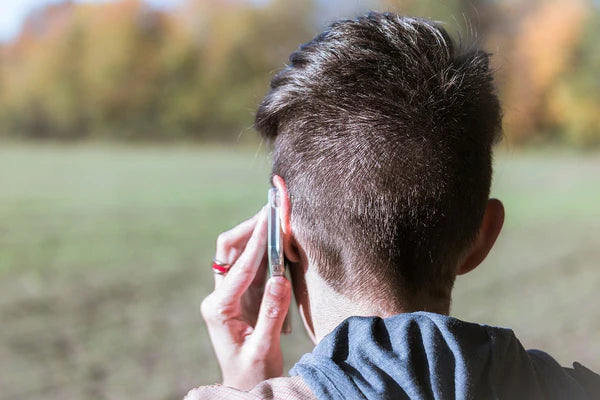
- Call Your Trusted Vet and Let Them Know You’re on the Way
This is important so they can give you advice on how to transport your pet and for them to prepare for your arrival. Explain what has happened immediately and follow their specific advice.
Here's 7 Questions Every Pet Owner Should Ask Their Veterinarian that can help you out on emergency vet appointments!
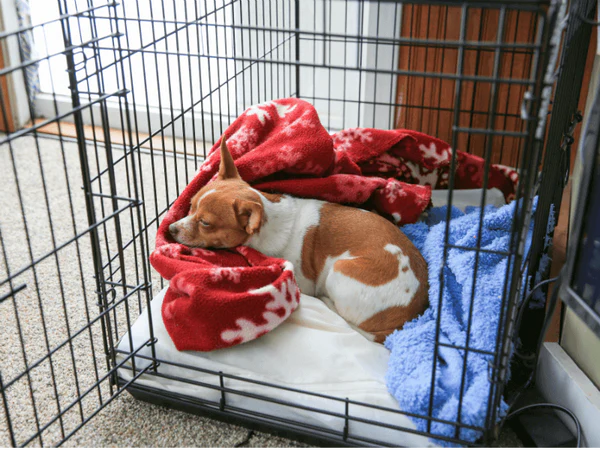
- Keep Your Pet Warm
This is especially important if you’re about to bring them to the vet. You can wrap them with a warm towel or line their cage, carrier, or crate with them and even better, put a hot compress underneath the towel or any soft cloth. If it is an accident, do keep movement to a minimum, especially if there are neurological symptoms, broken bones, or any chance of a spinal injury while keeping them warm in your arms. Your presence is still the best remedy for them to carry on while being brought to the vet.
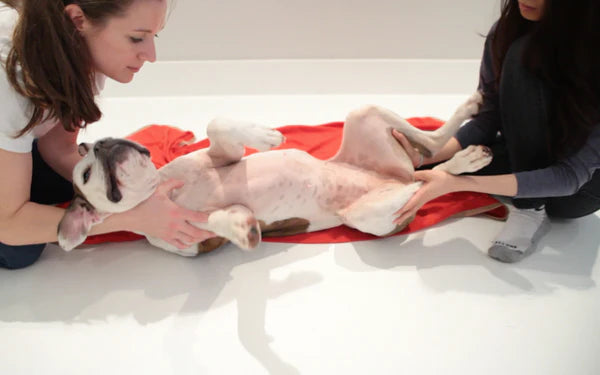
- Safely Move or Transport Your Injured Pet
Get somebody to help you if you can for moving an injured pet can be very fragile! For a small pet, put it into their carrier (remove the top for easy and safe access and don’t push them through the small door or opening), or a suitable container such as a strong cardboard box lined with a towel or a soft cloth if that’s the only option. For a larger pet, use a makeshift stretcher made out of some rigid material such as an appropriate-sized, sturdy piece of wood. Carefully maneuver your pet into a towel or a soft cloth so that it can be gently moved to the carrier, box, or stretcher. The cloth will help stabilize the neck and spine, and prevent inadvertent biting or scratching from the injured pet.
- Restrain Your Injured Pet Properly
Most injured pets will be panicked, disoriented, or in pain and the stress can cause even friendly pet to act aggressively! Although most panicky pets respond to a calm, soothing voice and stroking of the head and shoulders, it is important to maintain your safety caution when approaching or touching an injured pet. You can use muzzles in these kinds of situations.
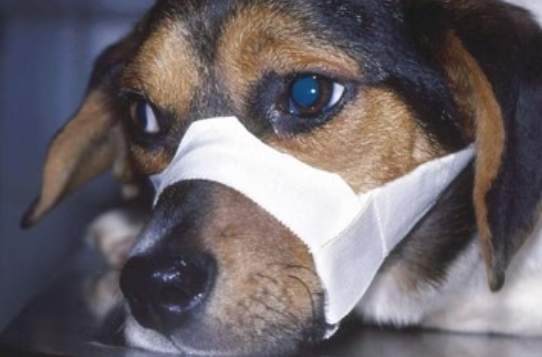
Dog muzzles can be created out of a leash, belt, rope, or a pair of pantyhose or tights. Make a loop in the cord and lasso it around the muzzle, tightening it to prevent your pet from biting. Dogs have only one muscle to open their jaw so once the jaw is closed, it will be easy to hold it safely shut. And don’t worry about their breathing for dogs can easily breathe through their nostrils unless their nose is injured or obstructed.

Cat muzzles can be difficult to put on due to the shape of most cats’ faces. There are specific muzzles designed for cats but they are rarely handy when an emergency strikes! For some cats, it may be possible to loop an improvised muzzle made from a piece of rope or a pair of pantyhose around the cat’s head to prevent it from biting. If you can safely get the jaw closed, it will be easy to keep it closed because cats only have one muscle to open their jaw. If not, put a towel over the cat’s head to provide some measure of protection but still be cautious.

You can also wrap your pet snugly in a towel or any soft cloth to minimize movement during transportation. But be very cautious in doing this for there is a possibility of broken bones or spinal injury. If you suspect a spinal injury or broken bone, lay your pet on a board to immobilize it with straps or cords. Pay special attention to immobilizing the head and the neck.
Conclusion

Always remember that if your pet is exhibiting any of these signs and you think they should be brought to the vet, do remember to first not panic to have a clear mind and assess the situations and be able to do the next important steps. You know your fur babies the best. Any sudden changes, subtle or not, should not be ignored. Knowledge about these things may help you in the long run especially in emergency situations. You might even help your friends and their fur babies!
A visit to the vet can help you feel at ease so don’t hesitate if you think it is needed. No one wants to see their beloved pet in pain, so your vet will give you suggestions to help your pet feel better and be sure there are no medical conditions you should worry about. By keeping the information above in mind, you should be able to make the choice much more easily.
You could always call the vet as you see fit and asking a few questions over the phone will not cause you anything at all! Your vet should be able to tell you whether you should bring your pet in right away, or whether you can wait for an examination during your vet’s normal office hours. Even if you find out nothing’s wrong, I’m sure it will make your mind at ease than constantly thinking if something is wrong or not. Being prepared for an emergency situation will help you in the long run!
You can also check these articles of ours to learn more!
- Basic Pet Care Necessities You May Not Know!
- Top 5 Most Common Illnesses of Cats in Singapore & How to Prevent Them
- Top 5 Most Common Illnesses of Dogs in Singapore & How to Prevent Them
- 7 Common Pet Owners Mistakes You Should Avoid Doing
Feel free to share this with your fellow pet owner friends who might need this information right now! You can also leave a comment down below about your pet emergency experiences to help other pet owners, we would also love to read them!
Sign up to our newsletter down below & follow us on Instagram @sgsmartpaw to stay up to date with our weekly blog articles!
References
- https://www.veshospital.com.sg/vet-emergency/
- https://www.memphisveterinaryspecialists.com/site/blog-cordova/2019/07/05/veterinary-emergencies-cant-wait
- https://veterinaryemergencygroup.com/blog/cat-emergency-vet/
- https://www.vets-now.com/2017/01/common-pet-emergencies/
- https://www.stfrancisvh.com/blog/should-i-take-my-dog-to-the-vet-when-its-time-to-go-to-the-vet/
- https://aspengrovevet.com/urgent-pet-care/what-to-do-in-a-pet-emergency/

Rose Hazel San Diego
Hazel loves pets & she has owned cats, dogs, & even hedgehogs! She also fosters cats & dogs in need around her area. With her social media & copywriting background, she gladly shares her knowledge of pets through these articles!
Most Recent Articles

7 Hidden Pet-Friendly Parks in Singapore You Must Visit With Your Pet ( Updated )
Looking for new adventures with your furry friend? Discover 7 Hidden Pet-Friendly Parks in Singapore that offer peaceful retreats away from the crowds. From scenic nature trails to spacious dog run...

8 Best Pet-Friendly Photography Studios in Singapore for a Pawsome Photoshoot
Looking for the perfect place to capture unforgettable moments with your furry friend? Whether it’s for a special occasion or simply to celebrate your pet’s unique charm, Singapore has a range of p...

7 Valentine’s Date Ideas You and Your Pets Will Love in Singapore
Valentine’s Day isn’t just for couples—it’s a time to celebrate the unconditional love between you and your furry companion! Whether you have a playful pup or a cuddly cat, there are plenty of ways...





